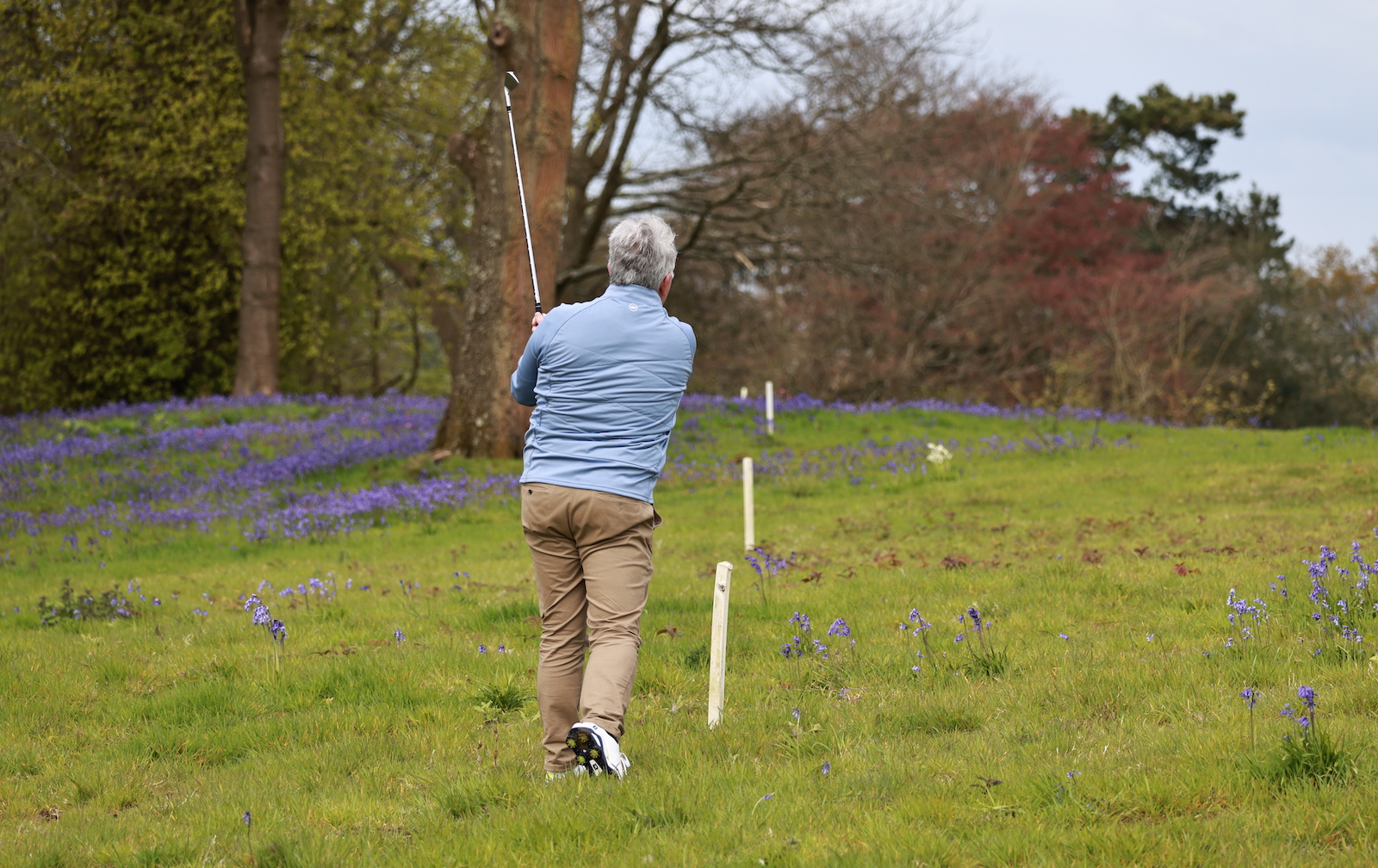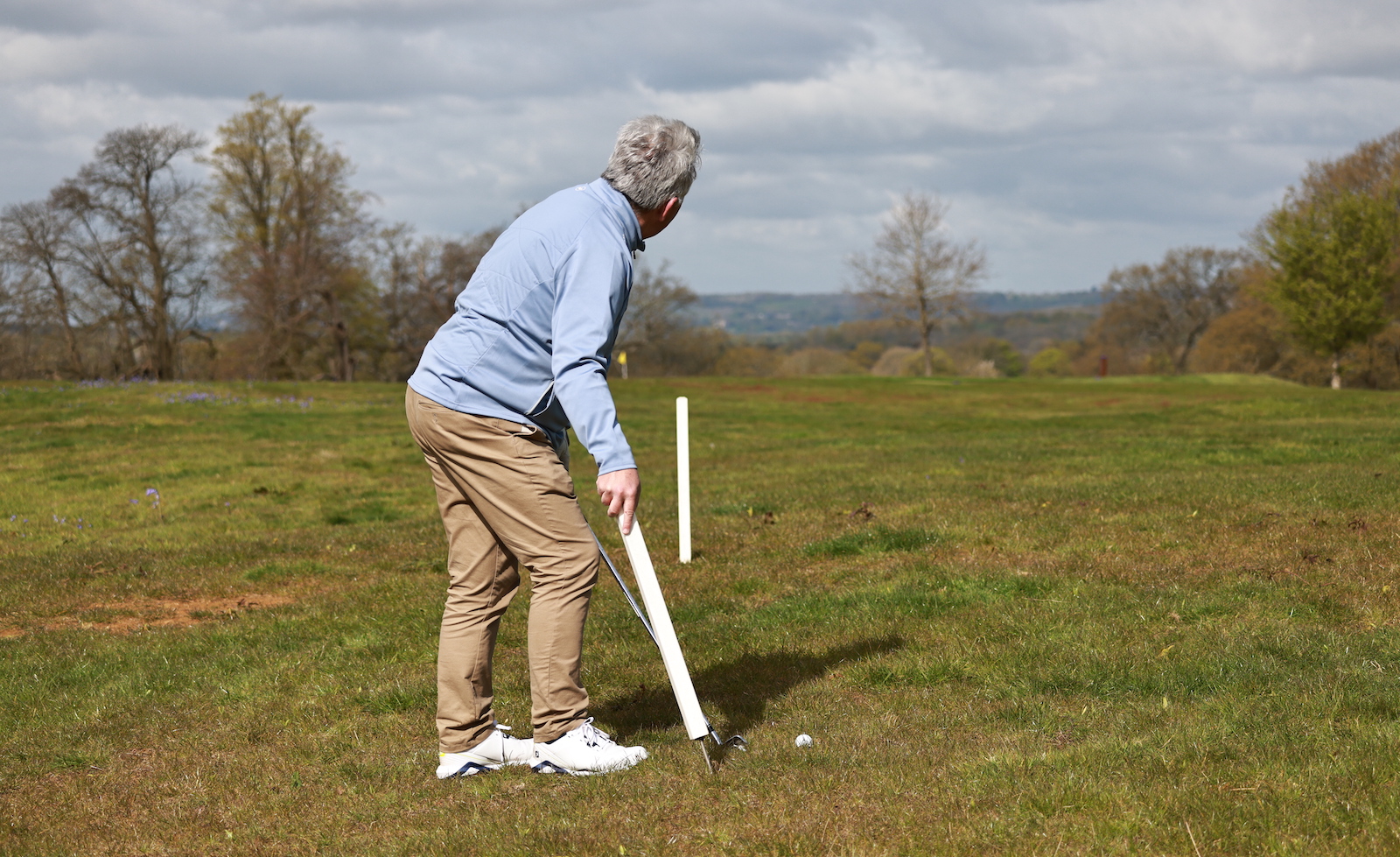
The simple answer to this question is that it largely depends on what colour they are.
Many golf courses will feature stakes of three different colours - red and yellow denoting penalty areas and white signifying out of bounds. Most often these stakes will be easily movable, at least physically, but crucially, only the red and yellow stakes can be classed as ‘movable obstructions’ under the Rules of Golf.
And therein lies the key difference between red or yellow stakes and white ones. If red or yellow stakes are easily movable, normally you may move them under Rule 15.2a to allow you to play your shot more easily whether your ball is lying inside the penalty area or outside (very rarely committees may class them as immovable even if easily movable and that does change things – see below). But if they are movable obstructions and you move your ball while removing a red or yellow stake, there is no penalty and the ball must be replaced.

White out of bounds stakes, on the other hand, are designated boundary objects and these are considered ‘fixed’ even if you could easily move them physically. This means that if your ball is in bounds and a white stake interferes with the lie of your ball, your stance or your area of intended swing, there is no free relief from it, and if you wish to take relief it will be under penalty via one of the unplayable ball options in Rule 19.

There is one bit of good news, though. If you do remove a white stake to facilitate your next shot, but then realise or remember that you can’t do that before playing, there will be no penalty if you ‘restore the conditions’ under Rule 8.1c by replacing the white stake exactly where it was.
However, if you do go ahead and play having removed a white stake, you will be adjudged to have improved the conditions affecting the stroke under Rule 8.1a, which gets you the general penalty of two shots in stroke play or loss of hole in match play.

Sometimes, stakes may be set in concrete or similar. So, what happens then? Well, with white out of bounds stakes, it makes no difference as they remain boundary objects from which there is no free relief.
But there is one important thing to remember when it comes to red or yellow penalty area stakes that are set into the ground and cannot be moved (or that have been deemed immovable by the committee). You still get relief if your ball is outside the penalty area, but this time proceeding under the immovable obstruction Rule 16.1a(2) and dropping at the nearest point of complete relief where the stake no longer interferes with the lie of your ball or area of intended stance or swing.
But if your ball is in the penalty area, sadly, there is then no free relief from an immovable obstruction and, if you decide not to play it, you would have to proceed under penalty via one of the penalty area relief options in Rule 17 according to the colour of the stakes.
It’s worth remembering that yardage marker posts or those big black and white poles indicating the line may be classed as movable or immovable obstructions by the committee – the latter sometimes because, again, they are set in concrete but sometimes simply at the committee’s discretion using Model Local Rule F-18.
There may be good reasons for this, although we struggle to see why you might want to make such an artificial interference immovable, but you need to know what they are classed as so you know whether to proceed under the movable obstruction Rule 15.2a or immovable obstruction Rule 16.1. If it’s the latter, it’s important to note that relief only extends to the post interfering with the lie of your ball, or area of intended stance or swing, and not just because it’s on your line and you fear hitting it with your shot… which is why we feel making them immovable obstructions is perhaps a little unfair.
Perhaps the most important thing to take away from this article is that, when it comes to the Rules of Golf, not everything that can be easily moved is actually classed as a movable obstruction.







